Thiago Menuci had never heard of Lac-Mégantic, Que., when he received an invitation to compete in a triathlon there in 2020. Menuci, 40, a coach and endurance athlete from Porto Alegre, in the south of Brazil, was scouting for a new challenge after he won Fodaxman in 2019 — one of the most gruelling extreme triathlon events in the Americas.
He Googled Lac-Mégantic, and only then did he learn about the disaster that had struck the town of 6,000 on July 6, 2013, when a runaway train carrying crude oil derailed, sparking a series of explosions and an inferno that razed the town’s core and killed 47 people.
Nine years later, as the rebuilding continues and residents still wait for the railway to be rerouted through an industrial park on the edge of town, Lac-Mégantic is synonymous with tragedy for most Canadians. But for triathletes like Menuci and his wife, fellow endurance athlete Daniele Crivalero, 42, Lac-Mégantic is on the map not because of what happened, but because it’s the home of CanadaMan/Woman — an endurance event few can aspire to accomplish.
“It’s an opportunity to be in a very beautiful and special place,” said Crivalero, who arrived early last week with Menuci for the July 3 race, to give themselves a few days to test their legs on the hills around the lake. “This is a race in which the competition is an internal challenge: up against ourselves, our own difficulties.”
Just getting ready for the race — the most difficult one she has faced, so far — means digging deep, Crivalero said.
“It asks for huge physical, emotional and spiritual growth.”

“In terms of a one-day effort, it is hands down Canada’s toughest triathlon,” said Kevin Mackinnon, a former pro triathlete-turned coach and editor of Triathlon Magazine Canada, after witnessing the fourth edition of the event, which was moved from July 2021 to October due to pandemic restrictions.
The 12 C water temperature that time of year meant a shortened swim — 1,500 metres instead of four kilometres — but the fall colours were on full display, a welcome distraction for participants who climb 2,500 metres over the 180-kilometre bike course, then ascend 1,500 metres in the marathon run that ends at the astronomical observatory atop Mont Mégantic.
The race Sunday is the fifth edition of the CanadaMan/Woman Xtri event, and for Jean-Thomas Boily, director of operations for Endurance Aventure, it’s a kind of comeback. The 2020 race had to be cancelled, and last fall’s race was off-limits to most foreigners due to continued uncertainty about travel and public gatherings.
“Last year we had, I think, one or two athletes from outside the country,” said Boily. “This year, people are coming from Norway, Colombia, a lot of people from the U.S.”
“So indeed, it’s a relaunch, and we are really happy to be up and running.”
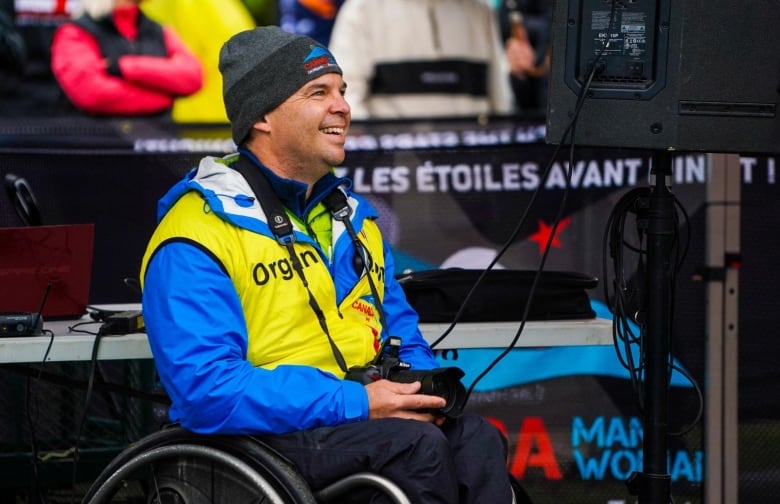
Boily, a former Paralympic cross-country skier and cyclist, co-founded Endurance Aventure in 1998 with his high school buddy Daniel Poirier, a long-distance triathlete and fellow outdoor enthusiast who, like Boily, grew up in Magog, 125 kilometres east of Montreal. Along with race director Bastien Michau, who is originally from France, they’ve organized more than 250 events, including in China and in Quebec communities as far flung as Kangiqsualujjuaq and Umiujaq in Nunavik.
‘It had to be difficult’
Boily and Poirier wanted to organize the first North American event demanding enough to be welcomed into the fledgling XTri World Tour, a string of extreme triathlon events that started in 2003 with Norseman, a long-distance triathlon in Norway. That race, which takes place every August, begins with a predawn plunge off the back of a ferry into an icy fjord and ends 1,880 metres above sea level, at the top of Mount Gaustatoppen.
“We wanted a region which, for people coming from outside the country, symbolized the idea of Canada. So great expanses of forest, good roads, and — to qualify for XTri — it had to be difficult, too.”
They thought immediately of the spectacular landscape around Lac-Mégantic.
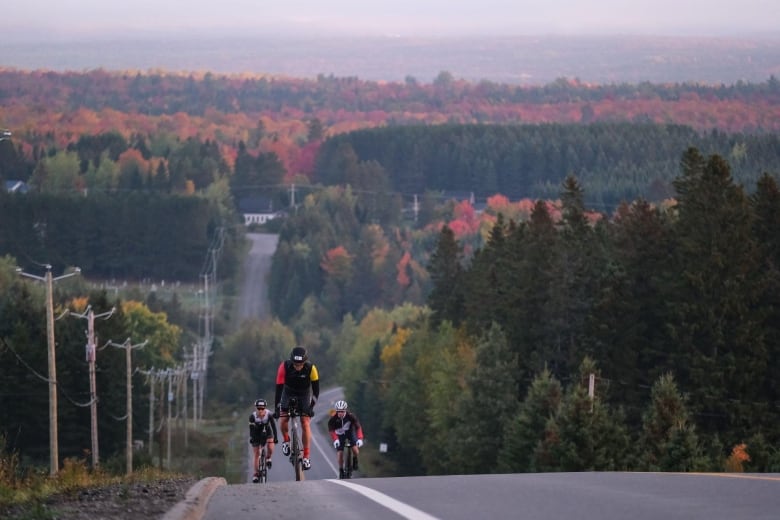
“It has to be there,” Boily recalls thinking back in 2015. “We called up folks in Lac-Mégantic, but we were doubtful. They were rebuilding the town. What had happened was all pretty recent.”
Town officials, however, gravitated toward the idea.
“We would really like that,” Boily said they told him. “Exactly because, slowly but surely, we need to move on. So that when you Google Lac-Mégantic, you see something other than images of the tragedy.”
So began a partnership between the race organizers and the town that has been transformative in ways no one could have imagined.
“We built a super team,” said Boily. “People were really open, motivated by the idea that reconstruction is not just about buildings, it’s about the life that goes on around them.”
Unanticipated spinoffs
The CanadaMan/Woman race is limited to 125 experienced athletes, plus each athlete’s support crew, which must include a runner to accompany their athlete on the final section of the run — basically a scramble up a rock face, for many, in the dark. To allow more mere mortals to participate, organizers stage a sprint race the day before the main event: a 750-metre swim, followed by a hilly 20-kilometre bike ride and a five-kilometre trail run.

“Suddenly, we are seeing more and more citizens who want to participate in the sprint race,” said Lac-Mégantic Mayor Julie Morin. “People are changing their lifestyle. They are training for the event. They have organized open-water swim groups, to practise together. More and more people are showing up to swim at the indoor municipal pool, to train.”
There are running clubs in all the surrounding municipalities, and a signposted bike course.
Last year, such was the demand that the municipality set up a permanent, marked swim lane in Baie des Sables, where the swim portion of the triathlon takes place, so people can train all summer long in a safe way.
“There is even a school triathlon program now,” said Morin. “So kids can see that even they can get involved in this type of event. It all goes to show that there are positive social spinoffs, as well as tourism and economic spinoffs.”
A silent walk
Olympian Lyne Bessette, a retired professional cyclist who served as the Liberal member of Parliament for Brome-Missisquoi, also in the Eastern Townships, has witnessed the community’s response to CanadaMan/Woman first-hand.
Bessette, who was the pilot for paracyclist and nordic skier Robbi Weldon’s gold medal win at the 2012 Paralympics, has raced CanadaMan/Woman every year it has been held — winning the women’s category in 2017 and 2018, losing to the U.K.’s Caroline Livesey by 10 seconds in 2019 and coming second again last fall, this time to Quebec’s Florence Lavoie-Deraspe, when she lost half an hour after getting lost on the run course.
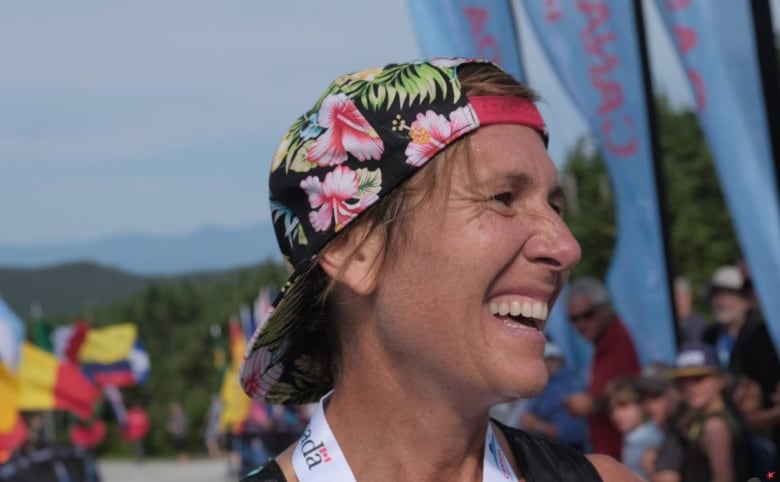
“The people behind this event have a great heart,” said Bessette.
She said for the first couple of years of CanadaMan/Woman, the event began not at the beach, at the swim start, but with a walk through the predawn darkness from the site downtown where the derailment occurred.
“There was a silent walk to remember those people that passed, and the horrific thing that happened to the town,” said Bessette. “So the organizers really care about what happened in Mégantic, and they wanted to make a relationship [between] their event and what happened.”
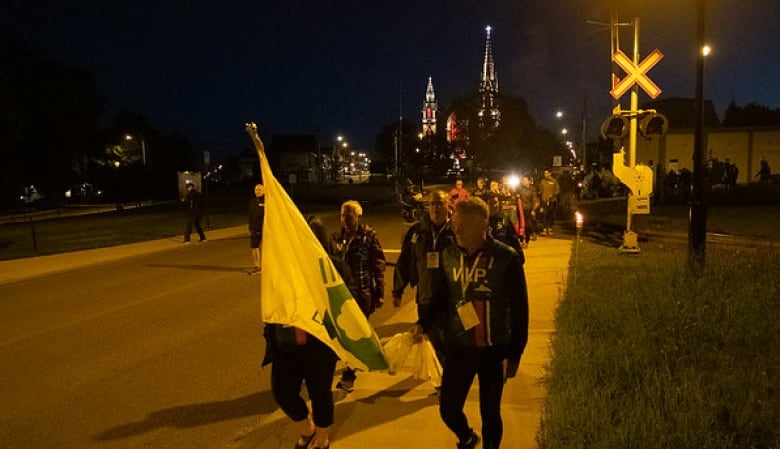
There is no silent walk planned for this year; however, athletes like Menuci and Crivalero say starting the swim at 4:30 a.m., in the dark, they will feel the solemnity of the event.
“This swim, before dawn, is very important,” said Crivalero. “It is in memory of those who died in the explosion that took place a few years ago, and this moves us.”
The best of the athletes will arrive at the summit of Mont Mégantic in daylight, but the stragglers, having started their race in the lake in the dark, will finish in the dark, too, in a place intent on preserving its status as the darkest place in southern Canada, known for its starry skies.
No matter how dark, no matter what time you finish, you are never alone, said Bessette.
“The organizers are there. The fans are there. People are there all night, to greet you when you finish,” said Bessette, who will be a spectator for the first time this year. “It’s a really well-supported and fun event — even if it’s one of the hardest I’ve ever done.”
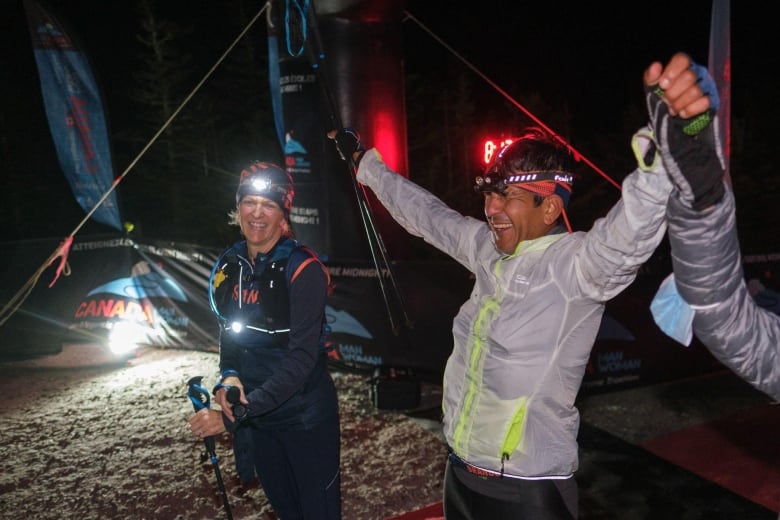













Leave a comment